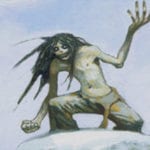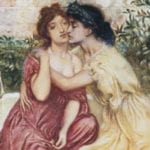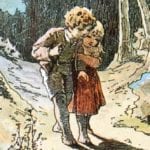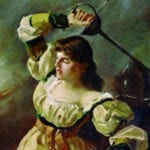 Crime
Crime  Crime
Crime  Technology
Technology 10 Hilariously Over-Engineered Solutions to Simple Problems
 Miscellaneous
Miscellaneous 10 Ironic News Stories Straight out of an Alanis Morissette Song
 Politics
Politics 10 Lesser-Known Far-Right Groups of the 21st Century
 History
History Ten Revealing Facts about Daily Domestic Life in the Old West
 Weird Stuff
Weird Stuff 10 Everyday Products Surprisingly Made by Inmates
 Movies and TV
Movies and TV 10 Actors Dragged out of Retirement for One Key Role
 Creepy
Creepy 10 Lesser-Known Shapeshifter Legends from Around the World
 Animals
Animals 10 Amazing Animal Tales from the Ancient World
 Gaming
Gaming 10 Game Characters Everyone Hated Playing
 Crime
Crime 10 Terrifying Serial Killers from Centuries Ago
 Technology
Technology 10 Hilariously Over-Engineered Solutions to Simple Problems
 Miscellaneous
Miscellaneous 10 Ironic News Stories Straight out of an Alanis Morissette Song
Who's Behind Listverse?

Jamie Frater
Head Editor
Jamie founded Listverse due to an insatiable desire to share fascinating, obscure, and bizarre facts. He has been a guest speaker on numerous national radio and television stations and is a five time published author.
More About Us Politics
Politics 10 Lesser-Known Far-Right Groups of the 21st Century
 History
History Ten Revealing Facts about Daily Domestic Life in the Old West
 Weird Stuff
Weird Stuff 10 Everyday Products Surprisingly Made by Inmates
 Movies and TV
Movies and TV 10 Actors Dragged out of Retirement for One Key Role
 Creepy
Creepy 10 Lesser-Known Shapeshifter Legends from Around the World
 Animals
Animals 10 Amazing Animal Tales from the Ancient World
 Gaming
Gaming 10 Game Characters Everyone Hated Playing
10 Creepy Tales From English Folklore
Every culture has stories that are passed down from generation to generation. They serve many purposes. They teach us how to live, explain the world around us—and, occasionally, serve as warnings. English folklore is among the most well-known in the world: From King Arthur to garden gnomes, it has shaped the folk culture of English-speaking countries around the world and inspired globally successful works of literature like Harry Potter.
There is another side to English folklore, though. A darker side, full of unexplained mysteries and stories of the paranormal. These are the stories we’re looking at today.
10 Redcap
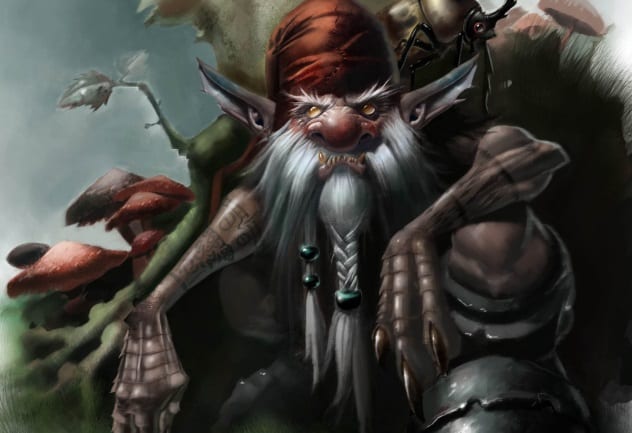
For hundreds of years, the continuous war between England and Scotland made the Anglo-Scottish border a lawless and dangerous place. Raiders frequently passed from one country into the other, committing crimes they knew they wouldn’t be punished for when they returned home. Over time, myths and legends about evil criminals and their horrific deeds sprang up. Alongside these, there also appeared many stories of malevolent spirits and creatures who took advantage of the hostile land to wreak havoc on the people who lived there.
One of these creatures was the Redcap, a sinister being which took the form of an old man with iron shoes.[1] He had long, unkempt hair, red eyes, thin fingers with nails like talons, and long teeth. He wore a deep red hat.
Prowling between the abandoned castles along the border, he would hunt for bodies left behind by war or raiding and use their blood to dye his cap. If there were no bodies, he would lie in wait in the old ruins, looking for unfortunate travelers, who he would kill with a rock and exsanguinate.
While the Redcap sounds scary, there was a way of defeating him: It was said that if someone recited the scriptures in front of him or brandished a crucifix, he would scream in pain and disappear in a ball of fire, leaving one long, ragged tooth behind.
9 Cutty Dyer
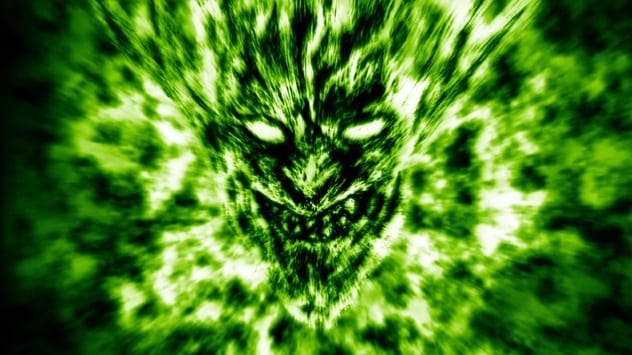
Cutty Dyer was either a water sprite or an ogre who stalked the waters of the River Yeo or Ashburn, depending on who you ask.[2] The legend is most famous in the town of Ashburton, where he was said to have slept in the darkness under the King’s Bridge. He watched for children or drunks who strayed too close to the river’s edge and then pounced on them, pulling them under the water and gorging himself on their warm blood.
The legend of Cutty Dyer stretches back to at least 1879, when it was first written about in a local publication, but even then, it was said that people’s great-grandparents also feared him when they were children. Cutty Dyer was often used as a bogeyman figure to scare children into behaving themselves and staying away from the river. Two men claimed to have seen him one night, standing waist-deep in the water, with bright red eyes like saucers and teeth like a shark’s. They were frozen to the spot in terror and only fled when he reached out and touched one of them.
Fortunately for the people of Ashburton, legend also has it that Cutty Dyer fled once the town was equipped with streetlights.
8 Drake’s Drum
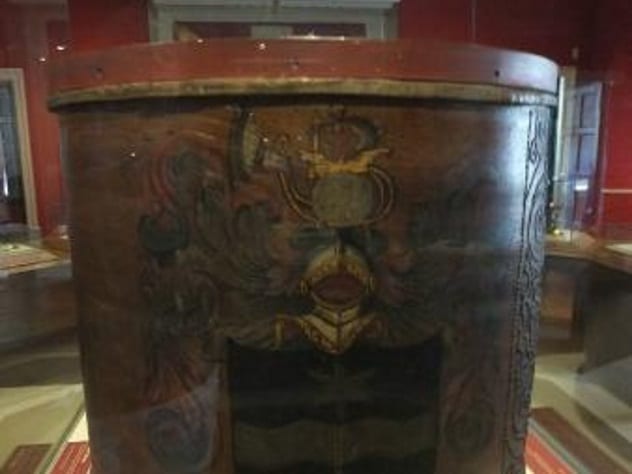
Sir Francis Drake accomplished a lot during his lifetime. As well as being the first Englishman to see the Pacific and circumnavigate the world, he performed many feats of skill in his career as a privateer, particularly by defeating the Spanish Armada in 1588 and putting an end to Spain’s hopes of invading mainland England.
Drake is undoubtedly an English hero, but there are many dark tales that have followed him. For example, some believed that he elicited the support of the Devil in order to beat the Spanish. In his final days, he was said to have ranted and raved deliriously “in words that no one cared to record.” Shortly after his death, one of his friends wrote a poem in his honor, which seems to hint that, in its time of dire need, he will return to save England again and usher in a new age of glory.
This led to the rise of a popular myth surrounding “Drake’s Drum,” an artifact which was kept on display until recently in his home of Buckland Abbey.[8] According to the legend, in times of hardship or peril, the drum can be heard beating. People are said to have heard it beating in the Napoleonic Wars as well as both World Wars. In recent times, the drum has been moved to a secure, climate-controlled location to keep it safe. A replica now sits in its original place.
7 Legend Of The Mistletoe Bough
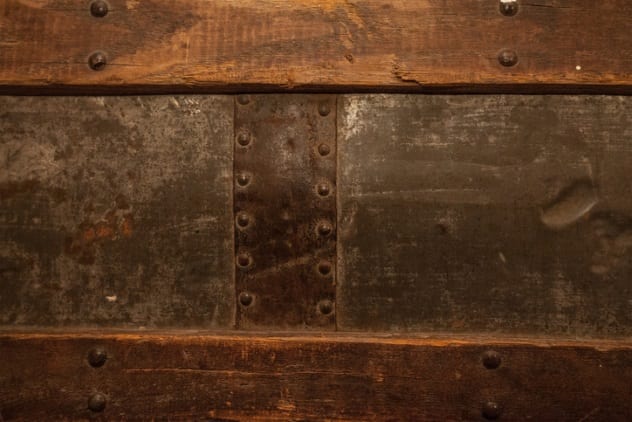
The Legend of the Mistletoe Bough was first written in 1822, though its author, Samuel Rogers, insisted it was much older.[4] According to him, it was already a story well-known across the country, and many old houses asserted that the tragic events of the tale happened in their halls. The story was put to verse in 1830, and by the middle of the 19th century, it was one of the most popular songs ever written in England. People frequently sang it on special occasions, and thousands across the country knew its words.
So the tale goes, a newly married couple and their guests were celebrating long into the night. After getting tired of dancing, the bride started a game of hide-and-seek. She went deep into the castle and found an old oak chest, which she crawled inside. The lid snapped shut, and she was unable to open it. As days, weeks, and years went by, they hunted for her but couldn’t find her. Eventually, in his old age, the husband found the chest and opened it, finding the skeleton of his beloved bride inside.
6 Will O’ The Wisp
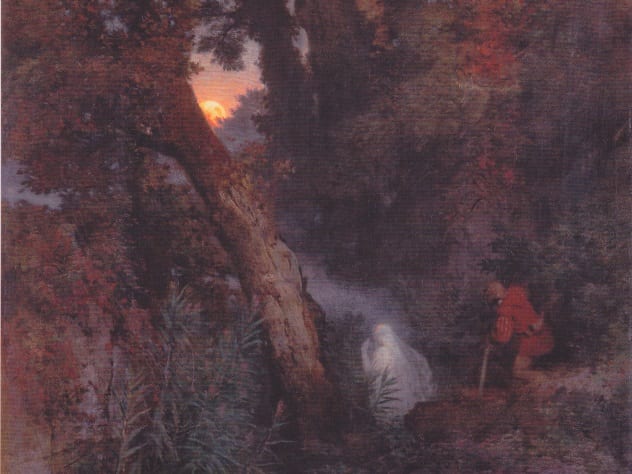
The Will o’ the Wisp, also known as a Will o’ the Torch or Jack o’ Lantern, is a softly glowing light that often appears at dusk or early night in marshes and swamps, though they occasionally occur elsewhere. References to these mysterious phenomena (which are also sometimes called “orbs”) appear in folklore across the world but have a particular prevalence in cold, wet England.[5]
According to myth, they are often found along out-of-the-way paths, trying to lure travelers who are lost along the road. Depending on how the traveler treats the wisp, they may lead them to safety or even to treasure, but most of the time, the wisp is a malevolent creature seeking to lead the unsuspecting to their doom. In Celtic myth, the wisp is a light carried by a fairy or other mischievous spirit, who will blow it out once the traveler is well and truly lost.
In some myths, the named character, Will or Jack, was an individual who led an extremely wicked life. When he died, he was cursed to roam the world forever, and the Devil gave him a single hot coal to warm himself. He used the coal to make a lantern, which he uses to lead people to their deaths. Others think they are spirits or paranormal beings. They have the power to predict the future, sometimes appearing before a local tragedy happens.
5 Black Annis
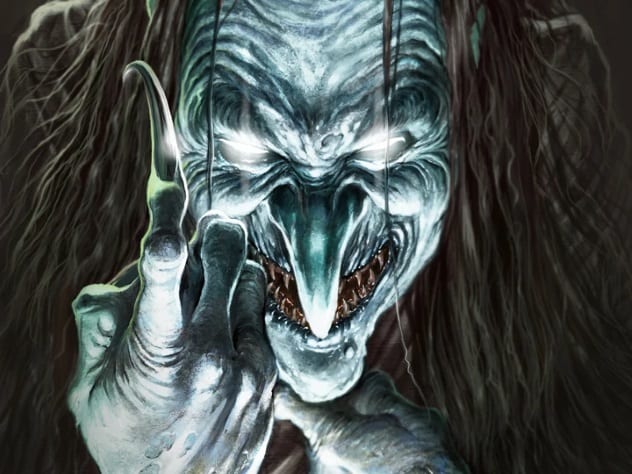
Black Annis, originally called Black Anny, is a mysterious witch who was first mentioned in a title deed in 1764, which referred to a road known as “Black Anny’s Bower Close.” According to the myth, Annis lived in a cave known as Black Anny’s Bower, which had a large tree by its entrance. The site of the cave is now lost; it is widely believed to have been built over during the housing boom that followed World War I.[6]
Black Annis herself was a witch with a blue face and claws made of iron. She would haunt Leicestershire at night, looking for young children or animals to eat. She had long, spindly arms, which she would use to reach in through people’s windows and snatch their children. Once she had them, she would take them back to her bower, drain them of all their blood, and then drape their skins on the tree outside. Once the skins were dried, she would add them to her skirt (which she’d made from the skins of children she’d killed before). Fortunately, Annis’s howls could be heard up to 8 kilometers (5 mi) away, so people had plenty of time to secure their windows and place protective herbs above them to ward her off.
4 Spring-Heeled Jack
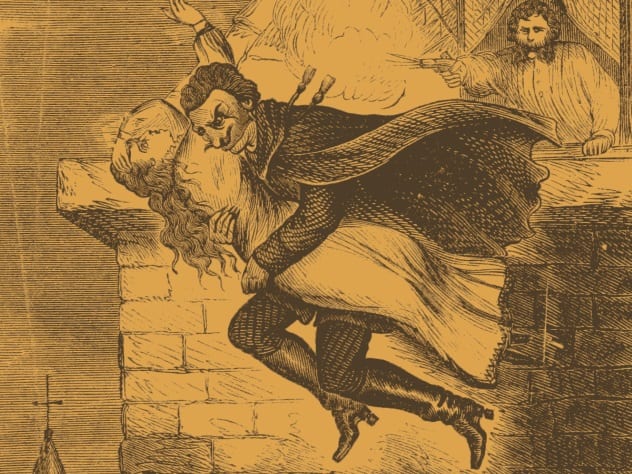
Spring-Heeled Jack was a mythical creature who terrorized Victorian Britain, particularly London, from the 1830s onward.[7] The mythical creature was first mentioned in a newspaper in Sheffield, England, in the 1810s, but Spring-Heeled Jack became notorious almost overnight after a spate of stories in 1837 and 1838. At least three women reported being attacked by a strange figure with red eyes, a skin-tight black suit, long fingers, and metal claws. In some cases, he breathed blue flames in their faces, paralyzing them. Fear spread like wildfire across Victorian London. People formed vigilante groups to try to catch Spring-Heeled Jack, and the police interrogated several suspects, but no culprit was definitively identified.
In the following years, Spring-Heeled Jack became an extremely popular figure, featuring again and again in sensationalist pamphlets and penny dreadful horror stories. As his popularity increased, actual accounts of his attacks became rarer and rarer, until he essentially became a figure of folklore, used as a bogeyman character to scare children into behaving—or Spring-Heeled Jack would jump up to their windows and get them.
Nowadays, most people believe the original Spring-Heeled Jack was the creation of a prankster with a daring sense of humor. The finger is often pointed at Lord Beresford, Marquis of Waterford, who apparently enjoyed scaring unsuspecting people at night and was in London when the first stories appeared.
3 Gytrash
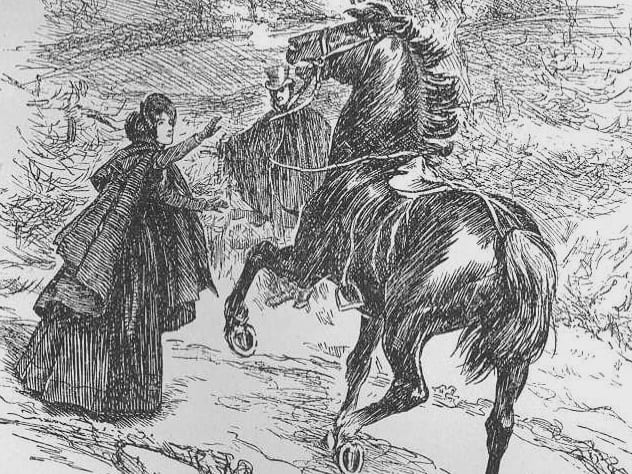
The countryside of Yorkshire is one of the most mysterious and least-traveled parts of Britain even today. The expansive hills are crisscrossed by ancient pathways that have been in use for hundreds of years. As a result, it is easy to get lost there, especially if the traveler is not familiar with the area. The wilds of Yorkshire are stalked by all manner of mysterious beings, from hobgoblins to wailing spirits that would lead the unsuspecting off cliffs or into marshes.
The Gytrash was one of the most dangerous spirits said to live in Yorkshire.[8] Often appearing as a black dog, mule, or horse with fiery red eyes, it would haunt out-of-the-way paths at sunset in search of travelers who had lost their way. The traveler would follow the Gytrash, only to be led further astray and become totally lost. Once the traveler was at its mercy, the Gytrash would either attack or disappear, leaving the lost voyager alone on the dark road. Occasionally, however, the Gytrash could also be a benevolent figure, leading lost people back to civilization. Famously, the Gytrash makes an appearance in Charlotte Bronte’s Jane Eyre, when she is scared by a solitary horse following her down the road.
2 Beast Of Bodmin Moor
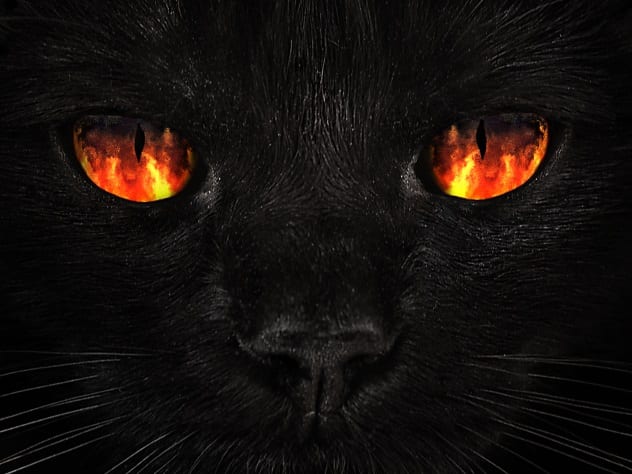
Bodmin Moor lies in the southwest of England, a place infamous for sightings of the unusual and the paranormal. It is sparsely populated and dotted with ancient ruins from the Neolithic period onward. Many local people consider it to be haunted.
The Beast of Bodmin Moor, however, is not thought to be a ghost but a large black cat that stalks the highlands and attacks livestock.[9] The stories first began in 1978, alongside several reports of animals being found mutilated. Some speculated that a large panther must have escaped from a private zoo—and since the panther would have been kept illegally, the owner didn’t report it missing. As time went on and the sightings continued, however, people began to look to other explanations. Some now think there might be a whole family of black cats roaming Bodmin Moor. Others say they are the descendants of ancient black cats which used to stalk Britain in the distant past.
There have been over 60 reported sightings of the Beast of Bodmin Moor over the years—enough to interest the UK government, which conducted an official investigation into the mystery in 1995. They concluded that there was no definitive evidence of an unusual beast living in the Moor, but the attacks on livestock were not adequately explained. Sightings of the beast continue to this day, and no definitive explanation has been found.
1 Boggarts
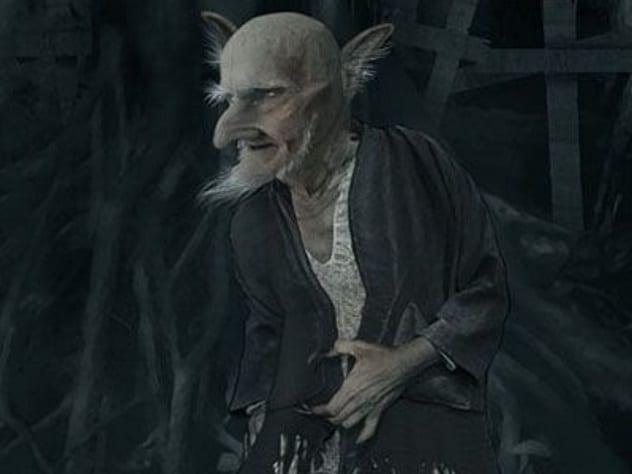
Boggarts have been made famous by J.K. Rowling, who featured them in her Harry Potter novels as evil creatures who take the form of whatever the victim fears most. In English folklore, however, a boggart was a kind of evil creature which attached itself to families or households and was a nuisance.[10]
According to traditional fairy tales, boggarts love to hide in dark spaces, such as unused attics or cellars, cupboards, or under beds. They were sometimes described as shape-shifters. Boggarts were the source of many misfortunes in the home: They broke things, turned food sour or rotten, and made the house creak, among other things.
Boggarts were also notoriously difficult to get rid of, following families from place to place even if they moved house. People were warned not to name their boggart, because once it was named, it would become even more powerful and angry and much harder to remove. There are many similarities between the boggart and the modern idea of the poltergeist, the main difference being that a boggart wasn’t a ghost but a malevolent fairy or other mythical creature.
Read more strange folktales from around the world on 10 Wicked Creatures From Native American Folklore and 10 Weird Beings From Slavic Mythology And Folklore.
